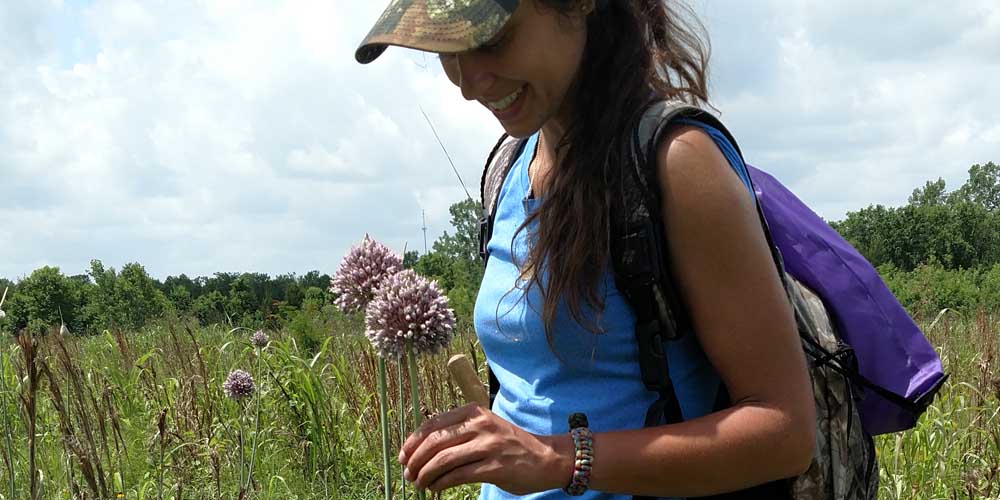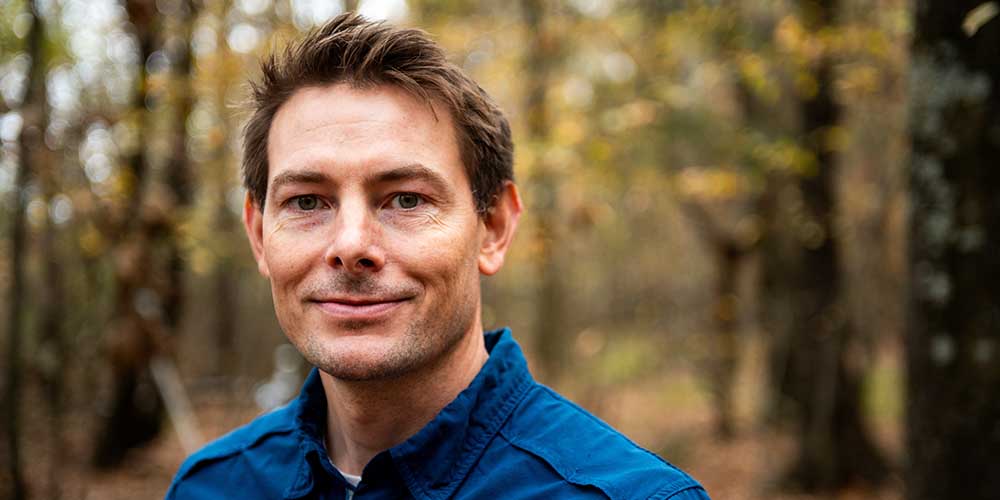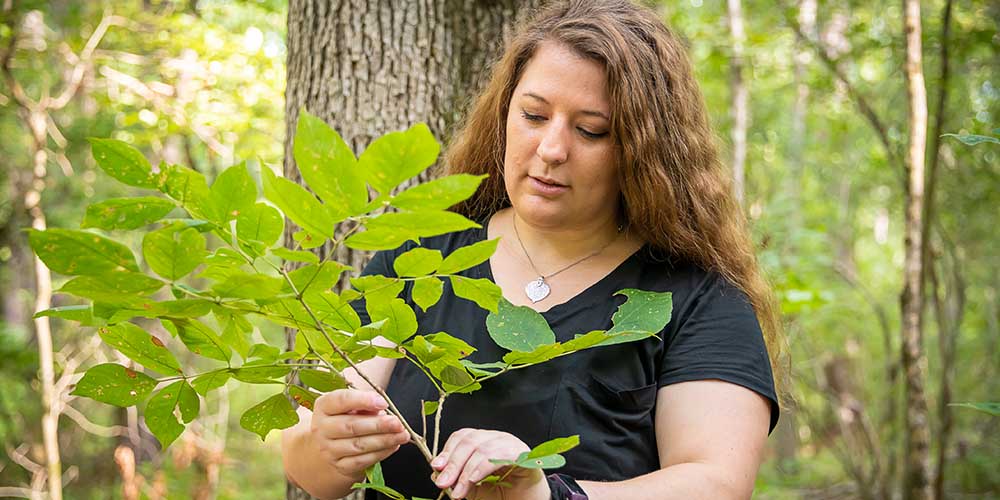Forest Biology and Watershed Management Stories

Go with the Flow
Dr. Courtney Siegert, associate forestry professor and FWRC scientist, studied how isotopes affect water usage of various tree species. Isotopes are left behind after rainstorms and are affected by factors such as temperature and humidity level, as well as where the storm originates. Siegert did not find significant differences in how tree species altered the isotope composition. However, the team did find a correlation between bark thickness and water retention; trees with thicker bark held more water than trees with thinner bark. According to Siegert, learning more about how water flows through a forest and how trees store water is more important now than ever, as regions like the Western United States are seeing greater periods of drought.
2017

Afforestation Benefiting the Environment
The USDA's Conservation Reserve Program (CRP), established nearly 40 years ago, has evolved from focusing on soil and water quality to addressing climate change by reducing greenhouse gases through carbon sequestration. Researchers at Mississippi State's Forest and Wildlife Research Center (FWRC), led by Dr. Austin Himes, are working with the USDA to assess the greenhouse gas contributions of CRP forested land. Their goal is to calibrate the DayCent model, which simulates greenhouse gas fluxes, by comparing the emissions and sequestration in CRP forests versus agricultural land. The team has measured greenhouse gases at 49 hardwood and 24 pine sites across multiple states and plans to expand their research. They aim to improve the accuracy of the DayCent model and better understand the impact of these forests on climate change mitigation.
The project also provides valuable field experience for students, particularly those working on greenhouse gas research. Despite challenges, the research has been exciting and provides insights that will aid USDA efforts in reducing greenhouse gases through conservation programs.
2023

Anticipating Invasive Insect Impact Before the Threat Arrives
Invasive insects, like the emerald ash borer and the redbay ambrosia beetle, wreak havoc on native ecosystems, kill hundreds of millions of trees, and cost hundreds of millions of dollars per year in lost revenue, management costs, and loss of ecosystem services in North America. Dr. Ashley Schulz, assistant forestry professor, is part of a team working to predict whether insect species will highly-impact North American conifers and hardwoods before they arrive here. team has a dataset of 300 European insects that have not yet arrived in North America and is establishing a baseline to determine which insects will be risky. The work was published in Biological Invasions and the team is now incorporating their models into a new pest predictor tool for i-Tree, a peer-reviewed software suite from the USDA Forest Service and Davey Tree Expert Company that produces forestry analysis and benefits investment tools. The research is funded through the United States Geological Survey John Wesley Powell Center, the USDA Forest Service National Urban and Community Forestry Advisory Council, and the MSU Forest and Wildlife Research Center.
Collaborators include the University of Maine, Dartmouth College, the University of Georgia, Colorado State University, Arkansas State University, University of Wisconsin, University of Washington, University of Nebraska, the USDA Forest Service, the United States Geological Survey Southwest Biological Science Center, and Davey Tree Expert Company.